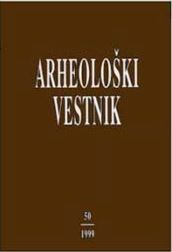Punctured reindeer phalanges from the Mousterian of Combe Grenal (France)
Abstract
There are a number of reindeer phalanges from the Mousterian levels of Combe Grenal with holes penetrating into the marrow cavity. Many of these resemble and could have been used as whistles. However, it is clear that many of the holes are due to natural causes, and in the remaining cases, the cause of the hole is ambiguous, often because of post-depositional chemical corrosion of the bone. This assemblage thus neither proves nor disproves the existence of either music or symbolism during the Middle Paleolithic of Europe.
Downloads
References
ALBRECHT , G., C.-S. HolDE rMANN, T. KErIG , J. lECHTErbECK and J. SERANGELI 1998, “Flöten” aus Bärenknochen - die frühesten Musikinstrumente? - Arch. Korrbl. 28,1-19. bINForD, l. r. 1981, Bones. Ancient Men and Modern Myths. - New York.
BORDES, F. 1972: A Tale of Two Caves. - New York.
BORDES, F. and F. PRAT 1965, Observations sur les faunes du Riss et du Würm I en Dordogne. - L’Anthropologie 69, 31-46.
CHASE, P. G. 1983, The Hunters of Combe Grenal: Approaches to Middle Paleolithic Subsistence in Europe. - BAR Int. Ser. 286.
CHASE, P. G. 1990, Sifflets du Paléolthique moyen (?). Les impli-cations d’un coprolithe de coyote actuel. - Bull. Soc. Préhist. Franç. 87,165-167.
CHASE, P. G. and H. L. DIBBLE 1992, Scientific archaeology and the origins of symbolism: A reply to Bednarik. - Cambridge Archaeological Journal 2, 43-51.
D’ERRICO, F. and P. VILLA 1997, Holes and grooves: the contri-bution of microscopy and taphonomy to the problem of art origins. - Journal of Human Evolution 33, 1-31.
D’ERRICO, F., P. VIllA, A. C. PINTo lloNAand R. RUIz IDArrAGA1998, A Middle Palaeolithic origin of music? Using cave-bear accumulations to assess the Divje Babe I bone ‘flute’. - Antiquity 72, 65-79.
HILL, A. P. 1989, Bone modification by modern spotted hyenas. - In: R. Bonnichsen and M. H. Sorg (eds), Bone Modification, 169-178, Peopling of the Americas Publications, Center for the Study of the First Americans, Institute of Quaternary Studies, University of Maine, Orono.
LARTET, E. and H. CHrISTY1865-1875, Reliquiae Aquitanicae. Being Contributions to the Archaeology and Palaeontology of Périgord and the Adjoining Provinces of Southern France. - London.
LYMAN, r. l. 1994, Vertebrate Taphonomy. - Cambridge Manuals in Archaeology, London.
MAGUIRE, J. M., D. PEMbErToN and M. H. COLLETT 1980, The Makapansgat Limeworks grey breccia: Hominids, hyae-nas, hystricids or hillwash? - Palaeontologia Africana 23, 75-98.
MARTIN, H. 1906, Présentation d’ossements de renne portant des traces des lésion d’origine humaine et animale. - Bull. Soc. Préhist. Franç. 3, 385-391.
MARTIN, H. 1909, Recherches sur l’évolution du Moustérien dans le gisement de La Quina (Charente). Vol. 2. - Paris.
NoblE, W. and DAVIDSoN, I. 1996, Human Evolution, Language and Mind: A Psychological and Archaeological Inquiry. - Cambridge.
PEIRCE, C. S., 1932-1960: The icon, index, and symbol. - In: C. Hartshorne and P. Weiss (eds), Collected Papers of Charles Sanders Peirce. Vol. 2, 156-173, Cambridge.
WETZEL, R. and G. boSINSKI 1969, Die Bocksteinschmiede im Lonetal (Markung Ramingen, Kreis Ulm). - Stuttgart.
Downloads
Published
How to Cite
Issue
Section
License

This work is licensed under a Creative Commons Attribution-NonCommercial-NoDerivatives 4.0 International License.
Authors guarantee that the work is their own original creation and does not infringe any statutory or common-law copyright or any proprietary right of any third party. In case of claims by third parties, authors commit their self to defend the interests of the publisher, and shall cover any potential costs.
More in: Submission chapter





